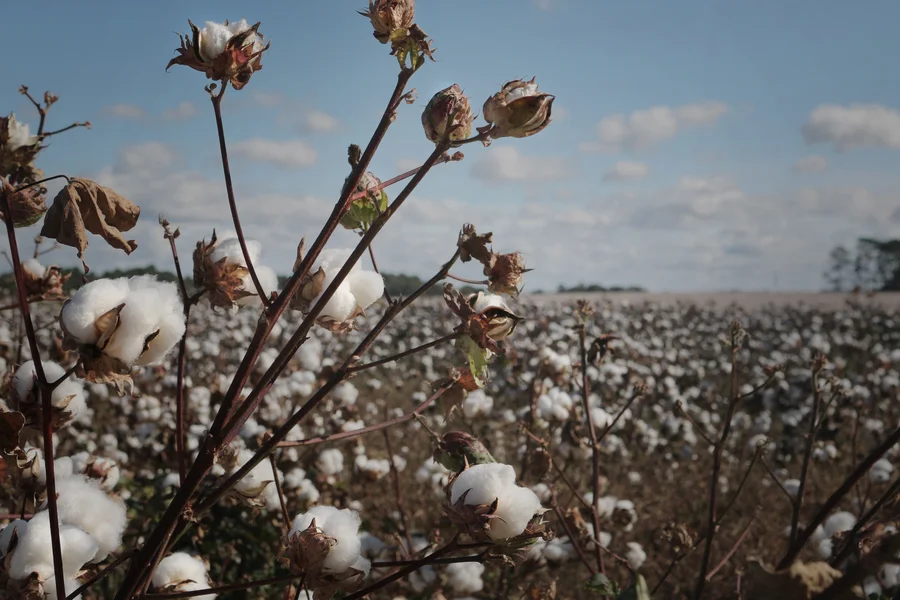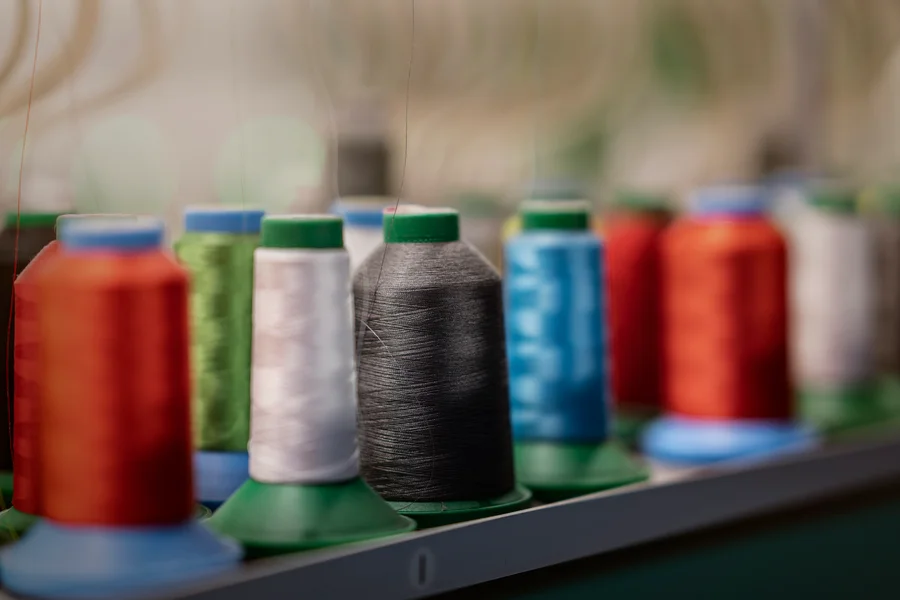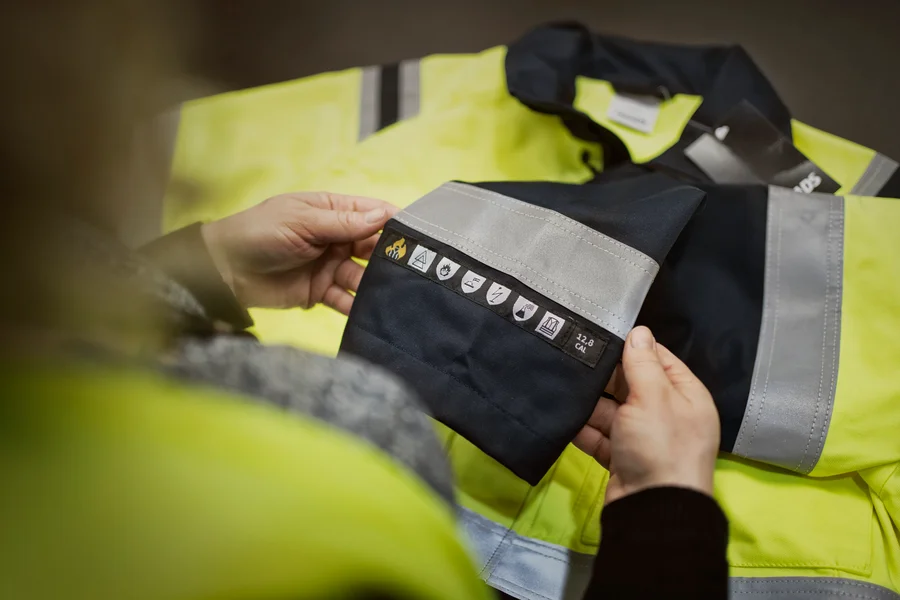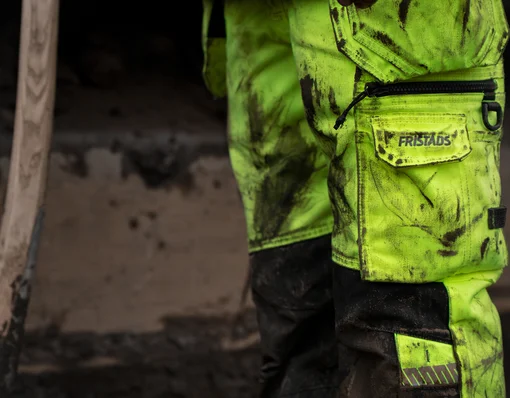
Laundry guide
Some care instructions for workwear, like never using softener and always brushing off the worst dirt before washing, are pretty much universal. However, some instructions for washing and drying differ depending on the material.
Polyester
We use both virgin and recycled polyester in our garments but as far as washing instructions are concerned, there is no difference between the two. Never use fabric softener with garments that contain polyester. Not only due to the environmental aspect of using unnecessary chemicals, but also because it has a negative impact on the lifetime of the garments and causes pilling. If you want to reduce the risk of static electricity, try using vinegar or rinse the garment in cold water instead.
You can tumble dry most of our polyester garments, although from an environmental point of view it is always better to hang them up to dry. Polyester dries very quickly.
Cotton
Since cotton has a tendency to shrink it is extra important not to exceed the maximum temperature on the care label when washing your cotton garments. The same applies to tumble drying. You can always choose a lower temperature than the maximum if the garment is not too dirty. A cooler temperature is gentler both on the environment and material.
Like for most materials, it is best to let cotton garments hang dry. It saves energy consumption and makes the material last longer. Cotton however can be quite stiff right after being washed. You can stretch out the garment a bit before hanging it up to soften it up a bit. Tumble drying also makes it a bit softer but be careful not to over dry it.

Wool
Wool is known for its self-cleaning properties. Of course, the garments you wear closest to your body need a clean every now and then, but not as often as cotton or synthetic materials.
When washing, use a detergent made for wool and choose the wool program without spinning on the laundry machine. The spinning can cause the wool fibres to felt. For the same reason, wool should not be tumble dried.
Softshell
When washing softshell garments, use a liquid detergent and always take an extra look at the care label. If the garment can be tumble dried, preferably choose a low temperature. Some softshell garments should not be tumble dried since they have a membrane/laminate in the lining which then risks coming loose.

Shell garments
By washing your shell garment often and correctly, you maximise its performance and lifespan. Use a liquid detergent and dose it according to the instructions to avoid residue, since that impairs the function of the garment. If possible, turn it inside out and rinse it an extra time. Spin on low speed.
As with all our workwear you should not use fabric softener when washing shell garments. Not only is it bad for the environment, but it also impairs the function and durability of the garments, as it clogs the pores.
After washing a shell garment, the surface must be reactivated by heat. You can tumble dry the garment for 20 minutes, use a drying cabinet or iron it (preferably with a cloth between the iron and the garment).
Flame protected garments
In our flame-retardant workwear, we use certified materials with protective properties. Some may have specific washing instructions, which is why it is extra important to read the care label carefully. Protection against EN 13034 must be reactivated and adequate treatment must be added to the washing process minimum for every 5th washing cycle. It is also important to wash flame-protective workwear regularly and keep them clean in order for them to work optimally.
Flame-protective workwear should be inspected on a regular basis and a great time to do that is when laundering. Damages to the garment that affect the protective properties mean that the life of the garment is over. Safety is top priority.

Wash like a pro
Dirt, grease and liquid chemicals – our workwear gets subjected to a lot. Depending on your occupation, the requirements for how clean the garments need to be also vary. If you see a PRO label in connection to or on a garment from Fristads, you know that it is tested for industrial laundry according to ISO 15797. The PRO label means that the garment can be washed at a minimum of 60˚C.
Did you know? Our high-vis collections are certified after they have been washed in an industrial washer 25-50 times, even though the industry standard is to certify a garment after just 5 washes. That’s how we know our products fulfill the safety requirements for a longer time.

More content for you:
How to care for workwear
We share our best tips for washing, wearing and storing your workwear correctly, so that you can extend its lifespan and enjoy it longer.
Care & Repair
Reduce, reuse and repair. When it comes to sustainability in the workwear industry, Fristads is leading the charge.
Timeless classics
Our timeless classics are the garments that defy trends and truly stand the test of time. And they are as popular today as they were then.





